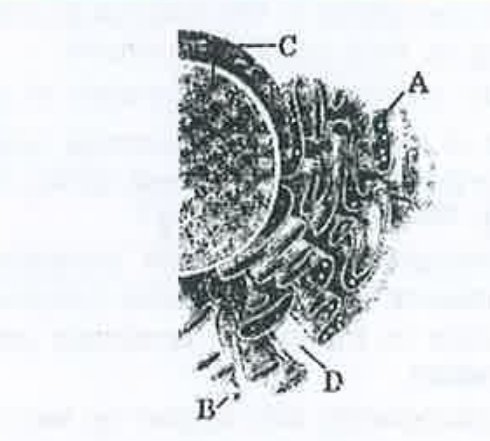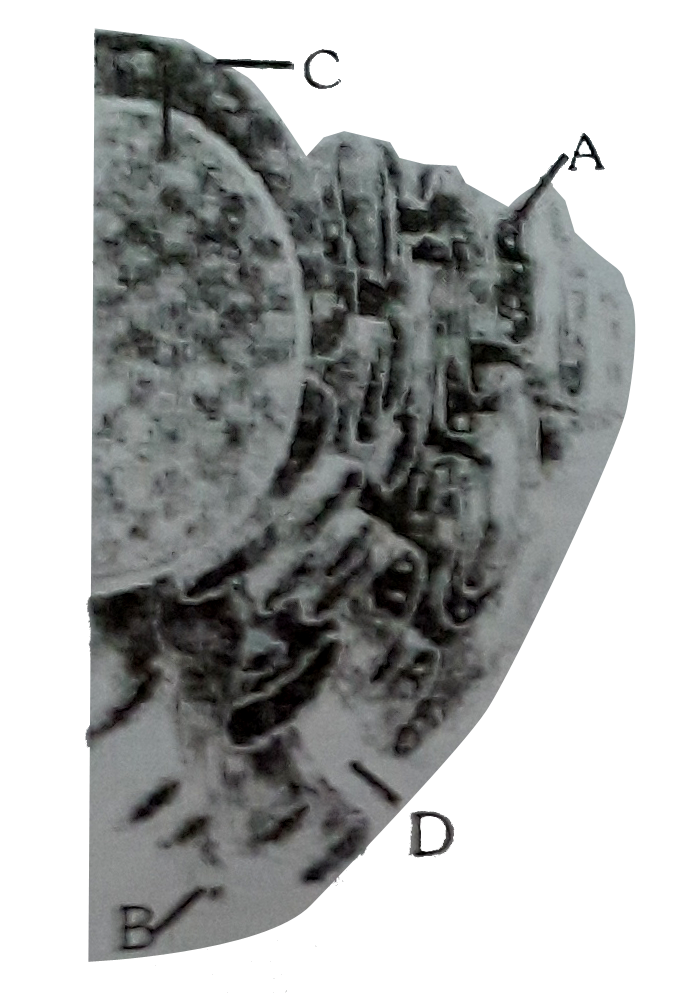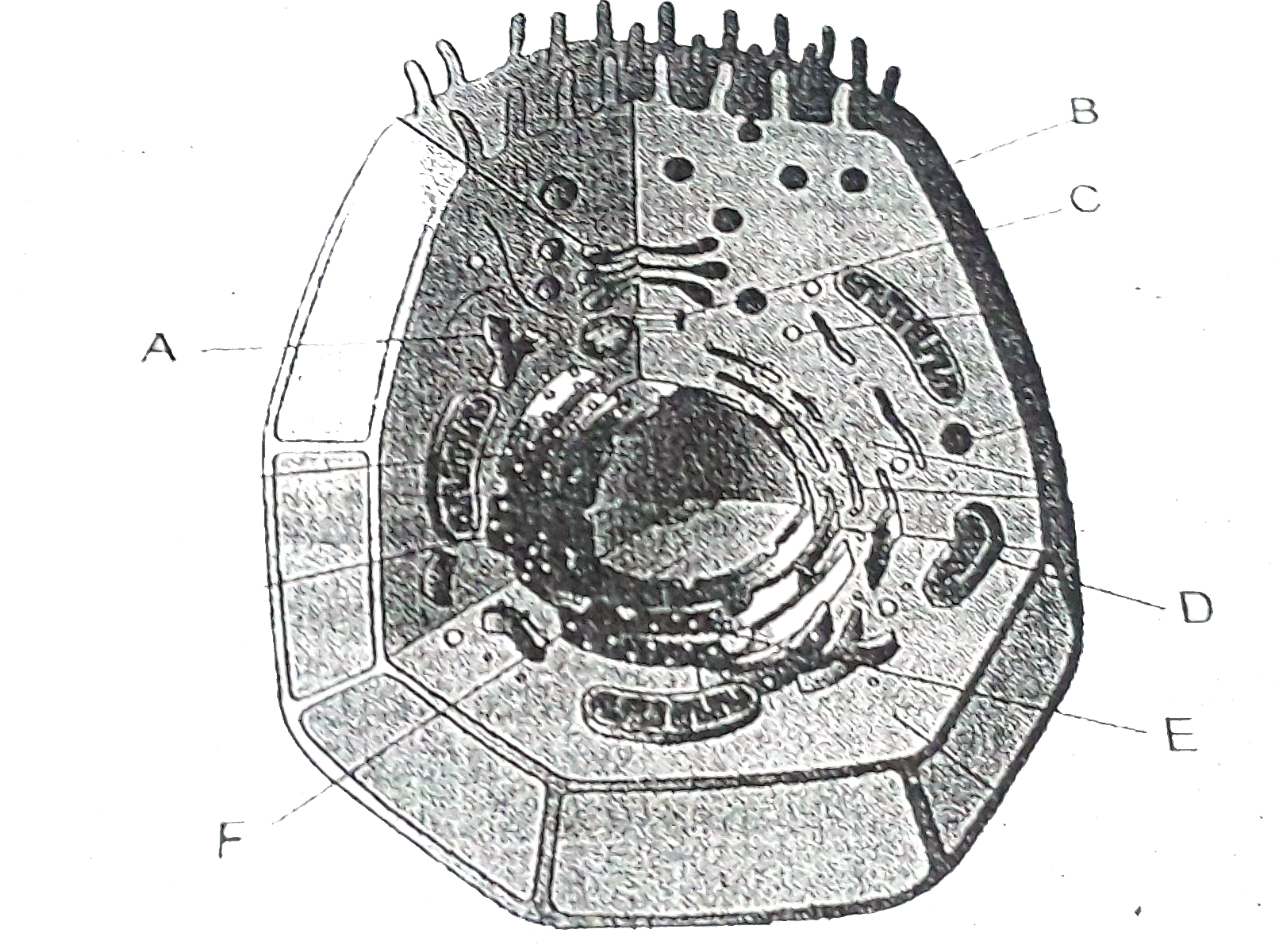Choose the matched ones
(a) Vibrio -Rod shaped bacteria
(b) Mesosome -Helps in cell wall formation
(c) Smooth endoplasmic reticulum-Synthesis of lipids
(d) Vacuoles -Rich in hydrolytic enzymes
b and c correct
a and d only
a, b and c only
b and d only
The correct Answer is:A
To solve the question, we need to analyze each statement one by one and determine if they are correctly matched.
1. Vibrio - Rod shaped bacteria:
- Vibrio is indeed a genus of gram-negative bacteria that are rod-shaped. A well-known example is Vibrio cholerae, which causes cholera.
- Conclusion: This statement is correct.
2. Mesosome - Helps in cell wall formation:
- Mesosomes are invaginations of the plasma membrane found in prokaryotes. They are involved in various functions including cell wall formation and aerobic respiration.
- Conclusion: This statement is correct.
3. Smooth endoplasmic reticulum - Synthesis of lipids:
- The smooth endoplasmic reticulum (SER) is a type of endoplasmic reticulum that lacks ribosomes and is primarily involved in the synthesis of lipids and lipid-derived hormones.
- Conclusion: This statement is correct.
4. Vacuoles - Rich in hydrolytic enzymes:
- Vacuoles are cell organelles that are primarily found in plant cells and serve various functions, including storage. However, they are not rich in hydrolytic enzymes; that role is primarily attributed to lysosomes.
- Conclusion: This statement is incorrect.
Final Answer: The matched statements are (a) Vibrio - Rod shaped bacteria, (b) Mesosome - Helps in cell wall formation, and (c) Smooth endoplasmic reticulum - Synthesis of lipids. The incorrect statement is (d) Vacuoles - Rich in hydrolytic enzymes.
- Vibrio is indeed a genus of gram-negative bacteria that are rod-shaped. A well-known example is Vibrio cholerae, which causes cholera.
- Conclusion: This statement is correct.
- Mesosomes are invaginations of the plasma membrane found in prokaryotes. They are involved in various functions including cell wall formation and aerobic respiration.
- Conclusion: This statement is correct.
- The smooth endoplasmic reticulum (SER) is a type of endoplasmic reticulum that lacks ribosomes and is primarily involved in the synthesis of lipids and lipid-derived hormones.
- Conclusion: This statement is correct.
- Vacuoles are cell organelles that are primarily found in plant cells and serve various functions, including storage. However, they are not rich in hydrolytic enzymes; that role is primarily attributed to lysosomes.
- Conclusion: This statement is incorrect.
Topper's Solved these Questions
- STRUCTURE OF THE CELLBOOK - DINESH PUBLICATION ENGLISHCHAPTER - STRUCTURE OF THE CELLEXERCISE - Check your Grasp
17 Videos
- STRUCTURAL ORGANISATION IN ANIMALS BOOK - DINESH PUBLICATION ENGLISHCHAPTER - STRUCTURAL ORGANISATION IN ANIMALS EXERCISE - Check your grasp
10 Videos
- THE CELL : THE BASIC UNIT OF LIFE BOOK - DINESH PUBLICATION ENGLISHCHAPTER - THE CELL : THE BASIC UNIT OF LIFE EXERCISE - CHECK YOUR GRASP
12 Videos
Similar Questions
Mesosomes help in
(A) Cell wall formation (B) DNA replication
(C) Replication (D) Secretion
(E) To increase enzymatic content
View SolutionConsider the following statement
(a) Endomembrane system includes mitochondria , chloroplast and peroxisomes
(b) Smooth endoplasmic reticulum is major site for synthesis of lipid
(c) Rough endoplamic reticulum is actually involved in protein synthesis
(d) Mitchondrial matrix possesses single cirular DNA , a few RNAs and 80 S ribosomes
Of the above statements
View Solution
Knowledge Check
When bacteria are rod-shaped, they are called :
(a) cocci
(b) bacilli
(c) vibrio
(d) spirillaAcocciBbacilliCvibrioDspirillaConsider the following statements
(A) Plant cells have centrioles which are absent in almost all animal cells
(B) Ribosomes are the site of protein synthesis
(C) The middle lamella is a layer made of calcium carbonate which holds the different neighbouring cells together
(D) In animal cell, steroidal hormones are synthesised by smooth endoplasmic reticulum
Of the above statementsA(A) and (B) only are correctB(C) and (D) only are correctC(B) and (D) only are correctD(A) and (D) only are correct
Consider the following statements
A. In prokaryotic cells a special membranous structure formed by the extension of the plasma membrane into the cell is known as polysome
B. The smooth endoplasmic reticulum is the major site for synthesis of glycoproteins
C. RuBisCo is the most abundant protein in the whole of biospshere
D. Mitochondria, chloroplasts and peroxisomes are not considered as part of endomembrane system
Of the above statements
View SolutionIdentify the components labelled A, B, C and D in the diagram below from the list (i) to (viii) given along with

Components :
(i) Cristae of mitochondria
(ii) Inner membrane of mitochondria
(iii) Cytoplasm
(iv) Smooth endoplasmic reticulum
(v) Rough endoplasmic reticulum
(vi) Mitochondrial matrix
(vii) Cell vacuole
(viii) Nucleus
The correct components are
View SolutionIdentify the components labelled A, B, C and D in the diagram below from the list (i) to (vii) given along with
Components :
(i) Cristae of mitochondria
(ii) Inner membrane of mitochondria
(iii) Cytoplasm
(iv) Smooth endoplasmic reticulum
(v) Rough endoplasmic
(vi) Mitochondrial matrix
(vii) Cell vacuole
(viii) Nucleus
The correct components are

View SolutionIdentify the correct statement w.r.t. the given cell

A. Concerned with lipid and steroidal hormone synthesis
B. Outer non- living rigid structure which gives shape to the cell and protects from mechanical damage and infaction .
C. Both lie perpendicular to each other and each has an organisation like the cart wheel .
D. Responsible for trapping light energy for the synthesis of sugar.
E. Present in cells actively involved in protein synthesis and secretion.
F. Spherical structures rich in hydrolytic enzymes.
View SolutionGo through the following matches (a) Spirullina - Rich source of protein (b) Gelidium - Polysulphate esters in cell wall (c) Chara - Cup-shaped chloroplast (d) Polysiphonia - Haplontic life cycle, Which of these are correct?
View SolutionMatch and find the correct combination
(a) Respiration in bacteria
(b) Respiration in cyanobacteria
(c) Respiration in eukaryotic cells
(d) Mitochondria
(e) Cytoplasmic membrane
(f) Mesosomes.
View Solution
